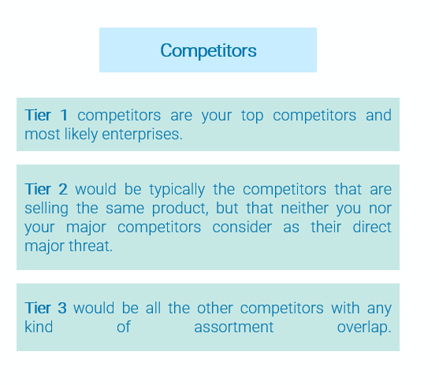How to prepare, implement, and get the best value out of Market Conditions.
Preparation
Before diving into the implementation, some prep work is highly recommended. We always advise to visualize and go over all the necessary components of your strategy beforehand. Some key elements to take into consideration, especially when using market conditions, are:
- Goals
What are the goals of the company and how should this be translated in the pricing strategy?
A discounter that has turnover as number one goal will have a different pricing strategy than a service-oriented retailer that is looking for higher margins.
- Assortment
What does your assortment look like? Does your pricing strategy differ per category or per brand? What part of the assortment has the most impact on the traffic you get on your webshop?
It is important to make sure that you know how your assortment differs so you can set up business rules based on each important part of the assortment. The simple distinction is between brand or categories, but there are a lot of other factors to take into consideration. Some examples are elasticity (elastic vs. inelastic), stock, or sales volume.
- Competition
How do you see the competitor landscape? Is it the same across all categories? Who are your main competitors? And which ones are less of a threat?
This is especially true in the usage of Market conditions, it is important to know who your competitors are and to what extent you should consider them in your pricing strategy. This gives you much more options to balance your pricing strategy and maximize margins.
For market conditions we would advise to divide your competition up into different tiers. For example:

As many possibilities offer themselves to you, other ideas and options to divide your competitors include:
- Into omni-channel retailers and online pure players. For specific categories, like household, the option to directly buy it in the store is a great advantage that customers might be willing to pay a bit extra for.
- Based on categories by selecting which competitors are most relevant for each one. For instance, if you are sports good retailer, your competitors for running shoes will not be the same as the ones for swimming goggles.
To sum up, it is essential to have a good overview of what you want to achieve with your pricing strategy in order to build a sustainable one. You can also check out this article if you want to dive more into the preparation needed for any strategy in Omnia.
Implementation
Once you are done with the initial preparation of your strategy, it is time to start implementing all of it in Omnia. As with all strategies, the first step is to add a business rule. After filling in the Assortment conditions, the natural next step would be to fill in the Market Conditions.
Start setting up a market condition by clicking on ‘Add condition’.
You will be asked to name the condition and select one of three templates, and fill in the variables required:
- In case # of competitors are present: This template allows you to focus on a specific set of competitors and only apply the business rule if a certain amount of these competitors are, or are not, a particular product.

- In case # of competitors are lower/higher than my selling price: You can set a condition on how many of your selected competitors sell a product for lower or higher than your own selling price (or any other Connect field).

- In case min/max/avg/most occurring price is lower/higher than my selling price: This last template uses aggregated data in the market to compare your own selling price to that of your competitors.

The price action is applied when all the Assortment Conditions and Market Conditions are true.
Now that we have explained the main steps to a successful implementation of Market Conditions. Let's look at how to translate it into your strategy. Here are some scenarios that can help you get inspired:
- Scenario 1: Get more margin when main competitors are not offering product
- Scenario 2: Avoid race to the bottom, by delaying response to the market
- Scenario 3: For a D2C brand, how to avoid high insult prices
